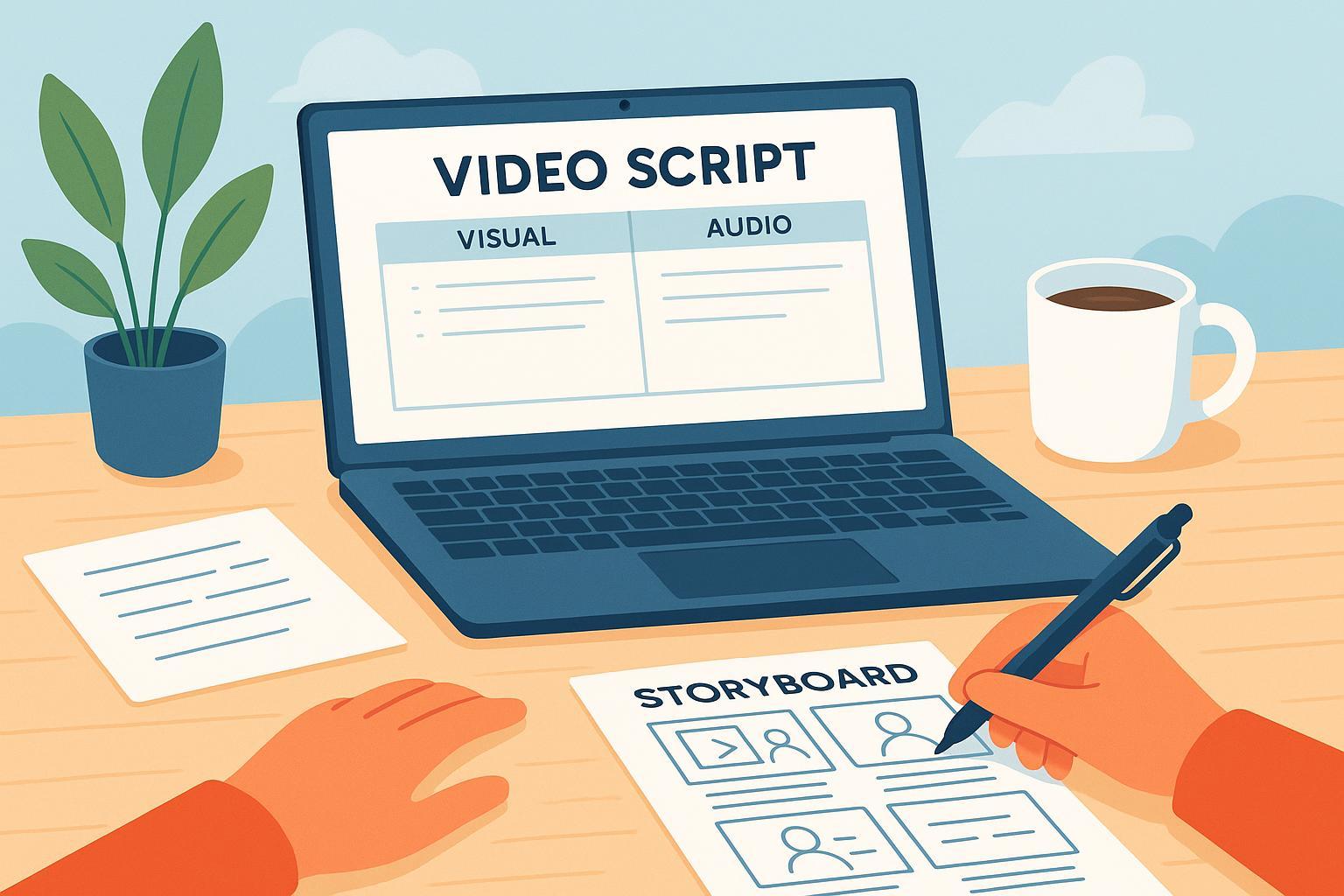How to Write a Video Script: Step-by-Step Beginner’s Guide (2024)
Learn how to write a professional video script with this clear, step-by-step guide. Includes templates, expert tips, and proven workflow so you can create scripts that are production-ready every time.


Are you staring at a blank page, unsure how to turn your idea into a video everyone wants to watch? You're not alone.
Crafting a great video script doesn’t require Hollywood experience—but a proven method and a few pro tricks. This guide will lead you through every stage, from ideas to a production-ready script. You'll finish with confidence, clarity, and a script you can actually shoot.
What You’ll Achieve (and Why This Guide Works)
Transform a blank page into a compelling, ready-to-film video script
Avoid common mistakes that waste time in editing or filming
Get pro tips, visual format templates, and troubleshooting resources
Read on to become your own video script expert!
Preparation: What You Need Before You Start
Essential Tools:
Computer or tablet with a text editor (e.g., Google Docs, Word)
Downloadable script template (Synthesia, StudioBinder)
Optional, but Helpful:
Storyboarding software (Milanote, Canva, Boords)
Feedback partner or collaborative platform
Pre-Scripting Checklist:
Define your video’s goal (ex: educate, sell, inspire)
Identify your audience and what matters to them
List your main message or core points
Gather any visual references or inspiration examples
Pro-Tip: Preparing a checklist before scripting speeds up the process by 30% and reduces revision time (see Wyzowl Research).
Step-by-Step: How to Write a Video Script
Step 1: Clarify Your Objective and Audience
Write down your goal in one sentence (e.g., “Show how easy it is to use our DIY kit”)
Define who the video is for (age, interests, pain points)
Step 2: Outline the Structure
Draft a simple outline—think of it as your roadmap
Typical structure:
Hook (grab attention in 5 seconds)
Intro (set up what’s coming)
Core Message / Body (essential info, story, or demonstration)
CTA (what should viewers do next?)
Visual Aid Needed: Add a screenshot or table of a basic script outline for quick reference.
Step 3: Choose a Script Format (AV is Best)
Use an A/V (Audio/Visual) Script Format:
AUDIO
VISUAL
"Welcome! Today you'll..."
Host in studio, smiling
SFX: Ding
Title slide animation
...
...
Download a free template: StudioBinder AV Script
Pro-Tip: Two-column scripts are standard for professionals—no missed visuals or awkward edits!
Step 4: Fill in Dialogue & Visual Cues
Write conversational, short sentences in "AUDIO" column
Directly instruct visuals in the "VISUAL" column ("Show diagram…", "Cut to screen recording…")
Include:
On-screen text
Key graphics or B-roll prompts
SFX (sound effects) and music cues
Visual Aid Needed: Insert a sample of a filled-in A/V script section here.
Step 5: Read Aloud & Review for Timing
Speak every word aloud—does it sound natural?
Use a script timing tool (Vidyard's calculator):
Average speed: 125–150 words per minute
For a 2-minute video, target 250–300 words
Check that visuals match your audio every step of the way
Step 6: Revise, Get Feedback, and Finalize
Edit for clarity, brevity, and engagement
Ask a colleague or friend for feedback
Tweak until everything flows naturally and visuals sync perfectly
Pro-Tip: Most script errors are caught by reading aloud or peer review (per Descript).
Step 7: Prepare for Production
Export or print the script in a clear format
Add any final production notes (camera moves, transitions)
Save a copy for backup and team sharing
Common Mistakes & Troubleshooting
Over-complicated language: Use simple, direct sentences.
Missing or vague visual instructions: Double-check every moment—what should audiences see?
No CTA: Always close with clear action (“Subscribe for more”, “Try for free”).
Script too long: Use timing tools and cut any rambling or off-message sections.
Jargon overload: Swap for everyday words or explain terms.
Expert Fix: Download, review, and compare your script to these free templates (Synthesia, Wyzowl).
Quick Reference: Downloadables
Frequently Asked Questions (FAQ)
Q: Should I write out every word?
A: For scripted videos (ads, explainers), yes—write every word. For interviews or loose vlogs, scripted bullet points may suffice.
Q: How do I keep my script engaging?
Open with a question or relatable scenario
Use short sentences and active voice
Break up text with visuals and cutaways
Q: Do I need special tools? A: Any text editor will do, but AV script templates and storyboarding tools help visualize the final result.
Q: How much time will this take? A: For a 2–4 min video, total script time is usually 1–3 hours (outlining, drafting, revising, and feedback).
See TechSmith’s Full Guide for deeper dives!
Wrap-Up & Your Next Steps
You now have a proven system for turning ideas into high-quality video scripts—regardless of your experience level.
Review your checklist and template before each new script
Practice reading aloud for flow and timing
Download free resources and keep building your script portfolio!
Ready to take your next step? Download a template, open your text editor, and start scripting today!
Want to master video production? Explore related guides on storyboarding, video editing essentials, and more!
References & Resources:





